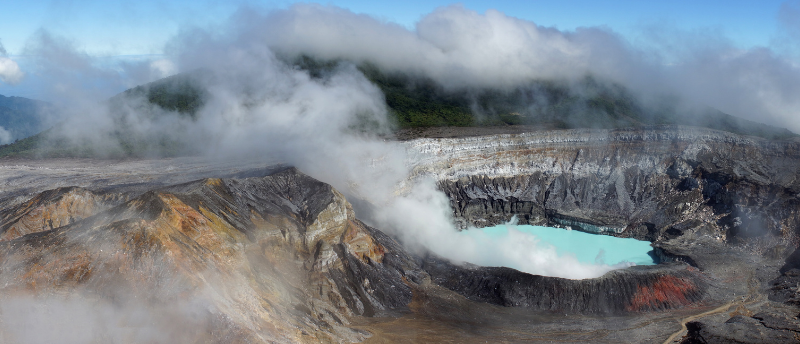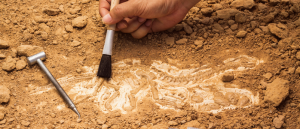Microorganisms in a volcanic crater lake shed light on life on Mars

Microorganisms in the harsh hydrothermal crater lake on the Poás volcano (Costa Rica) have revealed clues about the biochemical pathways essential to survival for early lifeforms on Earth, and maybe even on Mars.
Researchers from the University of Colorado Boulder (CO, USA) studied the biochemical pathways of microorganisms in the Laguna Caliente, a hydrothermal lake on the Poás volcano and one of the most hostile places on the planet. The temperature of this lake fluctuates from 38°C to 90°C, it has a pH range from -0.87 to +1.5 and contains a myriad of toxic metals. In addition to these already extreme conditions, Laguna Caliente experiences phreatic eruptions which, expel steam, ash and rock fragments – but not usually liquid lava.
Yet, somehow, certain microbes have adapted to survive in these conditions and call the Laguna Caliente home. These conditions are similar to the acid-sulfate hydrothermal systems found on Mars, meaning studying this crater lake could provide insight into the astrobiological potential of Martian environments.
The research group studied microorganisms collected from lake water, clumps of sulfur floating on the surface and other sediment samples. “One of our key findings is that, within this extreme volcanic lake, we detected only a few types of microorganisms, yet a potential multitude of ways for them to survive,” says Justin Wang, the first author of this study. “We believe they do this by surviving on the fringes of the lake when eruptions are occurring. This is when having a relatively wide array of genes would be useful.”
 Ancient DNA extracted from dirt in microscopic fossil-like bone particles
Ancient DNA extracted from dirt in microscopic fossil-like bone particles
Researchers have been able to extract ancient DNA from archaeological sediments using polyester resin, successfully obtaining DNA from samples collected 40 years ago.
The research team first visited the Poás volcano in 2013 and only found one microbial species, which was from the Acidiphiilium genus that has multiple genes adapted to survive this harsh habitat. They revisited the crater lake in 2017, to see if eruptions had changed the microbial diversity since it was last studied. The researchers found that whilst the Acidiphilium bacteria remained dominant, there was slightly more biodiversity in the lake.
DNA sequencing was used to study these microorganisms, finding that they have robust biochemical capabilities, which may help them survive in these extreme conditions. These include metabolizing sulfur and iron, along with other unusual pathways to create energy.
“We expected a lot of the genes that we found, but we didn’t expect this many given the lake’s low biodiversity,” says Wang. “This was quite a surprise, but it is absolutely elegant. It makes sense that this is how life would adapt to living in an active volcanic crater lake.”
Hydrothermal systems certainly don’t sound like the most comfortable place to live, but they do provide the essentials for evolution: heat, energy and water. Therefore, these environments are becoming increasingly studied to answer questions about life on Earth and on Mars.
“Our research provides a framework for how ‘Earth life’ could have existed in hydrothermal environments on Mars,” explains Wang. The authors suggest that research on Mars should include old hot spring sites, as the focus is currently on streambeds or river deltas. “But whether life ever existed on Mars and whether or not it resembles the microorganisms we have here is still a big question. We hope that our research steers the conversation to prioritize searching for signs of life in these environments, for example, there are some good targets on the crater rim of Jezero Crater [on Mars], which is where Perseverance rover is right now.”





